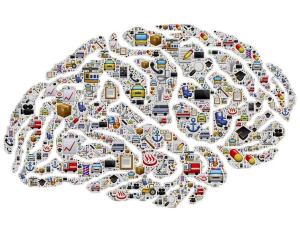Imagine you are in primary school, and it is the first day of term. Mrs. Teacher welcomes the students, and begins to explain how her class will work this year.
She tells the class about the new sticker system she is implementing- where good behaviour, good marks, and consistent participation allow you to earn stars. When accumulated, they can then be exchanged for a reward at the end of the month.
Out of the ten people in the class, she asks who would like to be the accountant- i.e., who is going to mark down the total sticker rewards at the end of the month.
Tracy, raises her hand immediately, yelling “PICK ME!”
No one else bothers with the responsibility, so, Mrs. Teacher elects Tracy as the scorekeeper, and hands her the notebook.
As the days go by, students begin accumulating stars. The incentive system seems to be working. Class participation is high and Mrs. Teacher feels pretty good about her scheme.
One day Tracy’s mom calls into school to let Mrs. Teacher know that Tracy will not be joining the class. Tracy tripped over a unicorn toy last night and hurt her ankle.
No one in the class cares that she is gone. Until Joe receives a star and has nowhere to put it, Tracy had taken the notebook home with her.
Joe says to Mrs. Teacher that they need to come up with a solution so that his star gets recorded.
Mrs. Teacher says that until Tracy comes back they will put the stars on a piece of paper and then glue it into the book once Tracy returns.
This seems fair at first and everyone agrees.
Tracy misses the next day of school.
Mrs. Teacher employs the same paper tracking tactic for day two.
Tracy misses another day; Mrs. Teacher does the same thing again.
At this point, over ten stars have been given out to various students and the paper is starting to get messy- though the teacher keeps a running count of who got which stars according to the paper.
On Friday, Mrs. Teacher leaves the paper with all the stars on her desk among a pile of other loose papers.
When the students arrive to class the next Monday the teacher has some bad news. The janitor saw the loose pieces of paper, thinking it was recycling they threw it out.
Now, all that data is lost and there is no way to tell who got how many stars accurately.
This is where a single data source fails.
The fact that there was only one ledger accounting this data, combined with human error, led to a case in which it is impossible to verify, with 100% accuracy, who had how many stars. Are we to trust the teacher’s recollection? Can you trust a student to tell the truth about how many stars he got last week?
The answer is no.
This is essentially the reason why blockchains are so popular.
Think of blockchains like this: instead of having only Tracy recording how many stars everyone has, everyone in the class would have their own notebook. Each student is then simultaneously taking down how many stars each person was getting. On a day that someone was not there, they would simply ask the class the next day what they missed, emulating the rest of the students notebooks. No one would be able to claim more stars than they had unless they colluded with more than half of the class to get that extra star.
Understanding “Mining”
I’m going to continue using the same classroom dynamic to help explain how an important feature of blockchains work: how blocks are added to the blockchain.
After having seen the issues with a single source database system, Mrs. Teacher has decided that it is now time that everyone takes note of who got how many stars, and when.
Everyone was given the same textbook with ten rows per page.
To ensure no one goes back and tries to fudge with the numbers, Mrs. Teacher comes up with an idea: after two pages are filled up, she will choose one person in the classroom to go around to everyone’s notebooks and staple the filled-in pages to one another.
To choose who gets to be the lucky winner, she puts up a math problem at exactly 3pm everyday. The first student to find the right answer to the problem wins, and for their effort will get rewarded a gold star starting off the entries on the new pages.
In essence, this is how new blocks are added to blockchains in a Proof-of-Work system (what Bitcoin is built on). Miners compete to solve an equation which requires work. For their efforts to ensure the security of the system, they are rewarded.
The year goes on and after the first mix-up with Tracy, there are no longer any issues in the class. All the stars are marked and accounted for.
School’s out.
This is a simplified story about the benefits of blockchains. Though the applications are seemingly endless. I firmly believe that this technology will radically shift the way the world operates in the years to come.
Take a moment to think about the applications this can have in industries such as finance, healthcare, logistics and government. Looking at the systems currently in place, comparing them to the potential benefits of systems built on the blockchain, I believe it is only a matter of time before the public starts demanding change.




